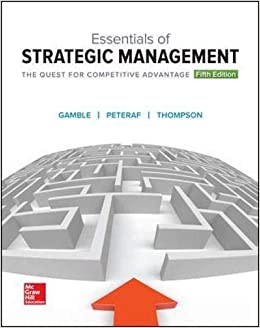Question
1 What is the principle state Act that controls the sale of food in your state? 2 According to the dairy food standards Australia (FSANZ)
1 | What is the principle state Act that controls the sale of food in your state? |
2 | According to the dairy food standards Australia (FSANZ) what temperature must dairy products be stored at and why? |
3 | List 3 control measures that should be in place when using egg products: |
| 1. 2. 3. | |
4 | What is the main biological hazard involved with egg products? |
5 | What laws are involved with 'Doggy Bags' in restaurants? What steps can be taken to minimise risks associated with this practice? |
6 | Can dogs or other animals be taken on to food premises by customers? Give an example of a department / legislative body that would cover this? |
7 | Consider the following if a power failure occurs in your food premises a) Can food be re-frozen? If so, under what conditions? b) Can hot food be re-heated? If so, under what conditions? |
8 | What does HACCP stand for? What does it mean? |
9 | What are the 7 Principles of HACCP? |
| 1. 2. 3. 4. 5. 6. 7. |
10 | What are the objectives of the Food Standards Australia New Zealand Act 1991? |
How should meats be thawed? What methods have the highest risk of microbiological 11 contamination? | |
12 |
|
13 | Give an example of critical point relating to the following ingredients
|
| a) b) | |
14What does the term 'high risk' customer group mean? | |
15 | Give 4 examplesof 'high risk' customers |
16 | Define the following:
|
| a) b) c) | |
17List 4 hazardous foods as per current legislation: | |
| 1. 2. 3. 4. | |
18 | List 4 practices that should be followed when preparing foods to prevent contamination? |
19 | Give a detailed description of the 2h / 4h rule (include the temperature range)? What is the 2-4 hour rule also known as? |
20 | Does freezing meat / fish / poultry products kill the bacteria? Explain your answer: |
21 | Discuss what conditions or standards that could influence the risks of contamination of meat: |
22 | Consider the following situation: Your restaurant has a hot food self-service display that you use for wet dishes (casseroles and similar foods), hot lunches and evening meals. When food is placed in the self-service display unit, it is hot (above 60 C). However, the unit is set to hold the food at a temperature of 45 C to prevent the food from drying out.
|
23 | Consider the following situation: You run a caf and want to serve quiches made by another food wholesale business. You want to ensure that the quiches are safe when they are received.
|
24 | What financial consequences may a business face for failing to observe food safety policies and procedures? |
25 | Besides financial costs, what other consequences may be incurred by failing to observe food safety procedures? |
26 | Consider your choice of equipment and materials relating to the following duties. For each, describe how, what you used why and you chose that specific equipment & material:
|
| a) b) c) d) e) |
27 | What is a food safety programme? Why should every kitchen have one? |
28 | a) If you noticed chipped, broken or cracked eating, drinking or food handling utensils how would you dispose of it and who would you need to report it to. B) How would you hygienically store and use your kitchen utensils for service? Explain why this is important. |
29 | What information must be included in a food safety programme? |
30 | What tests could you do to guarantee your customers that food is safe? Where would you record the results? |
31 | What are your legal requirements in regards to the reporting of health and illnesses whilst working with food and beverages according to FSANZ 3.2.2? |
32 | Describe 2 ways to calibrate a food temperature probe? Explain how would you identify faults in the temperature probe. Where would record your calibration results? |
33 | Describe how to use a temperature probe? Where wold you record your temperatures? | ||
34 | Describe how to clean a temperature probe? | ||
35 | What is your local government's food inspection regime? | ||
36 | What should you do before and after having checked the temperature of your refrigerated items for storage. | ||
37 | Describe the following hazards as they relate to food contamination | ||
Physical Hazards | |||
Chemical Hazards | |||
Biological Hazards | |||
38 | What are the correct conditions for dry storage. Please explain why these temperatures are important. | ||
39 | What monitoring documents would you use in your food safety program? List 4 and explain what they are and what information would you include? |
| 1. 2. 3. 4. | |
40 | Where would you store Meat, fish and fruit explain why? |
41 | Answer the following:
|
a)
b)
Step by Step Solution
There are 3 Steps involved in it
Step: 1

Get Instant Access to Expert-Tailored Solutions
See step-by-step solutions with expert insights and AI powered tools for academic success
Step: 2

Step: 3

Ace Your Homework with AI
Get the answers you need in no time with our AI-driven, step-by-step assistance
Get Started


